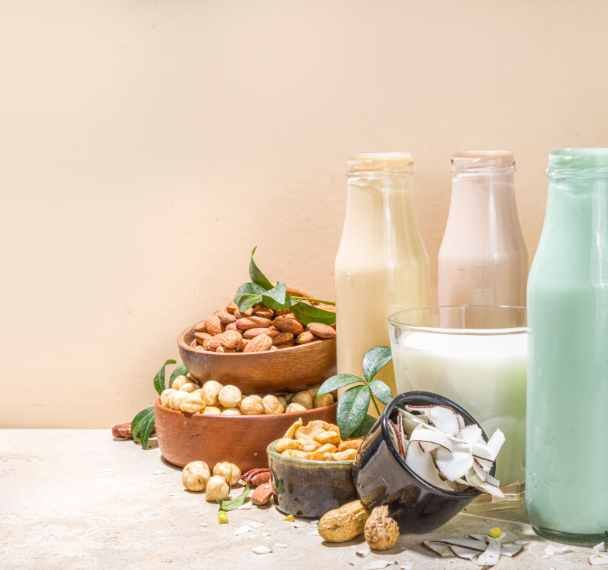Mastering Your Palate: How to Use a Flavour Lexicon
Apr 06, 2023Introduction
The complexity and variety of flavours found in food and beverages has long been a subject of fascination for both enthusiasts and professionals alike.
A flavour lexicon plays a crucial role in understanding these diverse sensory experiences, providing a standardised vocabulary for describing them. In this blog, the primary focus will be on mastering your palate by utilising a flavour lexicon effectively.
In the previous blog we explored the science behind aroma compounds and how they shape our food experience.
The power of Flavour Lexicons
Recognising and articulating our sensory perceptions can be challenging. For instance, how would you describe the aromas and flavours of a strawberry? Common descriptions might include sweet, ripe/unripe, sour, fresh/cooked. However, strawberry flavours can manifest in various ways, such as candy-like, ripe, jammy, green, creamy, fruity, juicy, floral, or even musty.
Misunderstandings can easily occur due to the complexities of human perception and expression. For example, the word "bat" has different meanings based on context: it could refer to a small flying mammal or a type of sports equipment.
People are not naturally adept at expressing their taste and smell experiences. A neutral description of sensory perceptions is necessary to eliminate language subjectivity, which is influenced by personal experiences and cultural backgrounds.
For effective communication regarding sensory perception, harmonising sensory language is crucial. This is the reason flavour lexicons and flavour wheels have been created for various products like coffee, cheese, and wine. They are also utilised by flavour houses to train their technical teams. By speaking the same language, people can better describe and understand the intricacies of taste and aroma.

Science behind aromas and memory formation
Smell impacts the flavour of your food
Aroma, or our sense of smell, plays a vital role in our perception of taste while eating, particularly when exhaling. Our tongues can detect only the five basic tastes (sweet, salty, bitter, sour, umami), whereas research reveals that our olfactory sense can identify trillions of distinct aroma compounds. Without the sense of smell, our understanding of flavour would be remarkably limited.
Try this exercise:
🔸Pinch your nose while taking a bite of any food.
🔸Chew with your nose pinched, observing the tastes and sensations.
🔸After swallowing, release your nose and notice the flavours when smell is reintroduced.
This principle applies when your nose is congested (e.g., during illness or allergies). The mucus blocks your olfactory senses, preventing you from smelling and thus diminishing your ability to detect food aromas.
How our brain processes flavours
Aromas and emotions are closely intertwined, as the olfactory system is directly connected to the limbic system, which governs emotions, instincts, and intuitions. This connection explains why we can sometimes detect aromas in food that are difficult to identify but may evoke powerful memories or feelings.
The brain processes signals from the olfactory system and works to make sense of the information it receives. It compares new sensory information with past experiences stored in our memory. Our initial reaction when tasting something is the fight or flight response—an instinctive survival mechanism that quickly determines whether the food is good or bad for us. Flavours follow shortly after.
The brain's primary goal isn't to analyse every detail of a smell, like dark roasted coffee or a floral strawberry. Instead, it aims to recognize a smell based on past experiences and associations. To achieve this, the brain simplifies the received information, focusing on vital details by creating archetypes—such as the coffee aroma outside a coffee shop or the scent of a fresh strawberry.
Identifying flavour characteristics requires practice! Our sense of taste is closely linked to memories and emotions, making it challenging to describe what we taste. Most of us never learned how to describe aromas and tastes, so we rely on our individual memories – but everyone's memories are unique.
Our nose is our most significant tool for describing flavours. We need to trust our nose and build a connection between our sense of smell and the brain.
The Flavour Lexicon training
The flavour lexicon tool involves descriptors, which are related to:
🔸A name: This signifies a specific taste direction.
🔸A reference: This could be one or multiple ingredients or finished products that can be tasted or smelled to show the descriptor's flavour direction. A reference acts as an undeniable anchor point and overcomes language obstacles. You may disagree with the terminology used for a reference, but the crucial aspect is to discuss the same thing!
🔸Sometimes a definition: This offers a clear description of the descriptor's name.
As discussed in the previous chapter, linking aromas with emotions plays a significant role. During a lexicon training, it is crucial to connect each reference to your own emotions and memories. For example, the green reference might bring back memories of freshly cut grass in your garden.
Familiarisation training enables quicker recall of references during product evaluation. Consequently, you can associate an emotion or memory with the relevant lexicon descriptors, articulate it effectively, and be understood by everyone.
During the training :
- Evaluate the references individually and silently, noting your personal associations for each.
- Discuss and share these associations with the group.
- Monitor the effectiveness of the training by attending occasional refresher sessions, where you will assess references without prior knowledge.
- Apply your learning in practice by evaluating flavours using your personal associations.
![]()
Future of Flavour Lexicons
Over several years, the IICCT has been developing an interactive flavour projection map and profiling system in collaboration with Alex Rast, a founding reviewer of Seventy% and a computer scientist at Oxford Brookes University.
The flavour projection map used by the IICCT is grounded in a neural network model that simulates the way the human brain perceives chocolate flavours, as well as research on flavour pairing based on compounds found in cocoa powder and their related aromas. Advanced statistical methods, such as PCA (principal component analysis), were employed to analyse these data sets and created the 2 axis:
🔸x-axis: the balance of tannic effect (left side) and acidity (right side/top right)
🔸y-axis: degree of roast/polyphenol content (top: less roast, bottom: high roast)
Each point on the projection captures a specific aspect of the potential flavour range, or archetype, representing the closest subjective match for chemicals found in chocolate. These points denote approximate archetypal flavours within the system rather than precise ones. Each archetype is chemically related, allowing for the exploration of related flavours.
Conclusion
In conclusion, flavour lexicons play a crucial role in providing a standardised language for describing and understanding sensory perceptions, transcending cultural barriers and personal experiences.
They are essential tools for effective communication within the food and beverage industries, helping professionals deliver products that align with consumer expectations.
Further advancements in research-based approaches such as the IICCT's flavour projection map, promise to further enhance our ability to accurately describe and comprehend taste and aroma experiences in the future.
Link to related blogs you may enjoy
🔶The Magic of Aroma Compounds: How They Shape Our Food Experience
🔶A Journey of Flavours: How a London Food Safari Will Broaden Your Culinary Horizons
🔶Finding Harmony in Chaos: The Art and Science of Flavour Pairing
References
Previous experience includes working at a flavour house, where I received comprehensive training on Flavour Lexicons. Working in the food industry, I honed my expertise by developing a Flavour Lexicon and training the R&D department, collaborating with a flavour supplier and the Sensory/CTI department.
IICCT and Level 2 Certificate in Chocolate tasting
Harold Mcgee, Nose Dive: A Field Guide to the World's Smells, 2020









